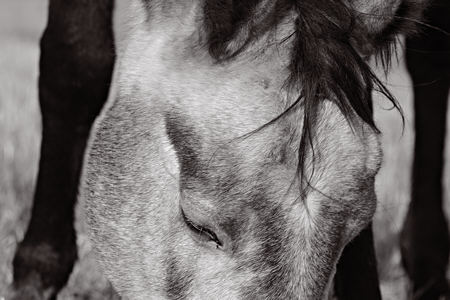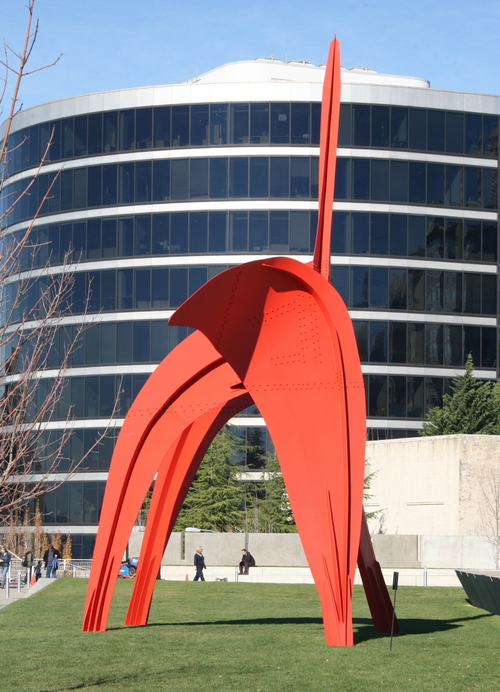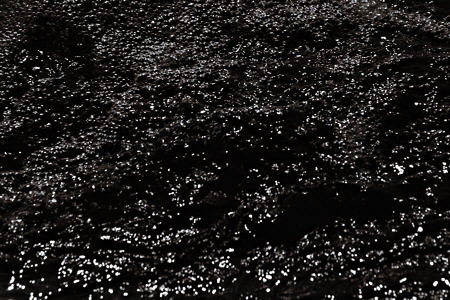For artwork to hold significance or persuasion, according to the ancient Greeks, it must have grounding in reality.
How about a rock and its watery reflection falling into outer space,

a multi-disciplinary dialog
For artwork to hold significance or persuasion, according to the ancient Greeks, it must have grounding in reality.
How about a rock and its watery reflection falling into outer space,

My most recent post concerned a purge, as I am consigning a number of objects to memory.
Objects over which I have lavished attention are getting the heave ho. We recently discussed the purgative benefits of doing this kind of thing, and I must say that it can take on a momentum as I have had to restrain myself from throwing out the entire body of work.
But this episode is not so much an exercise in destruction, as it is of transition; whatever experience gained will be used.
I had mentioned that it was time to read a novel and my wife handed me Speaker of the Dead by Orson Card. The theme of the story is largely that of redemption as the main character seeks to atone for past deeds. Thoughts of this were settling into my mind as I was tossing plaster. While contemplating my rubble field I could imagine a seedling reaching up from it. I was already embarked upon the next phase, which involves the substitution of an “ic” for an “er”: plastic rather than plaster, and had a few things lying about. I placed one on the heap.

We’ve often discussed the effect of perceptual structures and habits on ones experiencing of art. Recently, via my favorite general blog 3quarksdaily, I came across a nice formulation of a common theme: that we are blind to the usual. In an essay on Kafka, P. D. Smith quotes the Russian Victor Shklovsky (in “Art as Technique”, 1917) on the concept translated as defamiliarization:
… art exists that one may recover the sensation of life; it exists to make one feel things, to make the stone stony. The purpose of art is to impart the sensation of things as they are perceived and not as they are known. The technique of art is to make objects ‘unfamiliar’, to make forms difficult, to increase the difficulty and length of perception because the process of perception is an aesthetic end in itself and must be prolonged.
We are back from a few days visit to Seattle, a city overwhelming in its presence at this time of year. We were there at the height of the tourist season, staying near the Pike Street Market, in the very trendy, Belltown area. The scene was the art. Installation art at its best.
Some samples: a couple of buskers played what I think of as Appalachian, semi-bluegrass music. The young woman drummed and danced on her sound board, their voices had that mountain tension and piercing quality that carried through the roar of traffic and crowds of people, and beside them danced a dad and daughter, clearing a little space of their own to feel their own bodies. I danced a bit too.
There was also the accordionist at the Italian restaurant where we ate outside. He looked like a classic street musician, with a thick mustache, a tweed hat, and a big smile. We ate outside, a rare occasion because the evenings in the Pacific Northwest tend to be chilly and uncomfortable. But this was just right, with the light Italian music filling the air.
The next day we strolled through the new Seattle Art Museum Sculpture Garden located on the waterfront, in an ingenious zigzag across railroad tracks and freeways. We stopped to watch busking gymnasts go through their gyrations. They used the Alexander Calder Eagle as their stage, and we could see them as well as more parents and children (who did their own tumbling act) with the backdrop of sunny Puget Sound, filled with sails and tankers and ferries.

Then we went inside the pavilion to chuckle over the giant bulletin board of artist Goeff McFetridge:
The best moment was when a kid told her Mom: “Look at that guy upside down on his chair. I can do that, I can do that!”
The morning before we took the train home, we spent a couple of hours at the newly renovated downtown Seattle Art Museum building. The Impressionist exhibit had a too-long line so we wandered through galleries featuring varied permanent artworks. I studied painting techniques, and Jer observed absurdities. But when we reached the 4th floor, we were stunned by the African Art installation exhibit. (This exhibit isn’t clearly documented on SAM’s website but some understanding of it can be reached by reading the statements from a 2002 exhibit Long Steps Never Broke a Back. The audio/video pieces seen within the individual contemporary artist’s shown on SAM’s website gives some feel for what part of this 2008 exhibit consisted of.) Some of the art is part of SAM’s permanent collection, and some is a special exhibit of work by Willliam Kentridge, a South African video/performance artist. The presentation is stunning, making for a stunning surround for the “spectator.”
There are the usual masks and artifacts, presented on pedestals and behind glass. There are ancient masks and headresses. And, there are mannequins, dressed, life-sized and placed through-out the area — dancers and enactors of indigenous rituals, rituals which make use of body painting as well as masks and capes of feathers, etc. The mannequins reveal a lot beyond the art as it was presented cool and calm on its pedestals.
African Yoruba Nigerian Arobatan
Gelede Mask: Equestrian, 1920-1940
Wood and pigment
25 x 13 x 14 1/2 in. (63.5 x 33 x 36.8 cm)
African Ejagham Nigerian Cameroon
Basinjom mask and gown,
Cloth, wood, feathers, porcupine quills, mirrors, herbs, raffia, cowrie shells, rattle, eggshell, knife, and genet cat skin
34 1/4 x 17 11/16 x 19 11/16 in. (87 x 45 x 50 cm)
Mende Sande Society Sierra Leonean
Sowei mask, 20th century
Wood, raffia, yarn, leather, duct tape, and fabric
Overall h., irregular: 34 in.
And above these life-sized dressed figures are a couple of large video screens, which project African dancing and other ritual actions with the participants in full regalia; the videos are dated 1992 and there are spectators in ordinary western dress mingling with the creatures seemingly from another world. These videos, along with the sounds of the drumming and of the participants, surrounded us as we moved from the open area where the mannequins are placed.
Down a hallway, traditionally presented African art, encapsulated within its protective devices, is across from an opaque glass half-wall ( a 3-foot wall topping the escalator shaft) onto which other colorful videos of similar ritual activiities are projected. These videos showed artifacts similar to those presented conventionally, and thus the actual artifacts feel far more impressive and real than they seem displayed as separate “precious” art works. Finally, on the far side of the escalators away from the spectators, but on the wall above the shaft, facing the pedestaled art, is a video by artist William Kentridge. The video is part of Shadow Procession, a fantastic set of black silhouetted figures against a white backdrop, led by a trickster monster, Ubu. The initial part of the video has the monster setting up the scene, which is highly fantastic. However, as the “shadow procession” proceeds, the fantastic gives way to the horrifying, showing slaves, chained together, with all the accompanying horrors that could be imagined through silhouettes. It is a bit as if Kara Walker’s silhouettes moved into action.
So across the escalators we could see the black and white projected video of slave gangs as well as on the closer wall at our waists on which is projected the colorful dancing rituals of a contemporary African group in full regalia. On the other side of our aisle is the traditional museum exhibit of precious African objects behind glass and on pedestals.
And then we saw that, because we walked between the projectors and the wall projections, our shadows became part of the shadows on the walls; we were not just observers, we were observed and participants.
Dancing beside the buskers, treading the grass under a Caldecott artifact, observing a child enthralled with an art exhibit, being surrounded by ancient and contemporary artifacts from cultures whose descendants surround us — well, as I announced, surrounded by and enthralled also, by art.
June wrote recently about the story we tell of our personal history in art. On a smaller scale, there’s the story of a particular idea or even a single piece. There may not be a coherent tale in most cases, but it happens that there is (or I think there is) in the case of several photographs I made a few days ago.
